Archaeologists in Peru have uncovered a chilling chapter of history with the discovery of the skeletal remains of 76 children believed to have been sacrificed over 450 years ago. This remarkable yet gruesome find offers profound insights into the rituals and traditions of the ancient Chimu civilization, shedding light on their practices while further expanding our understanding of pre-Columbian societies. With this recent discovery, the total number of children sacrificed in this region has now risen to an astounding 302.
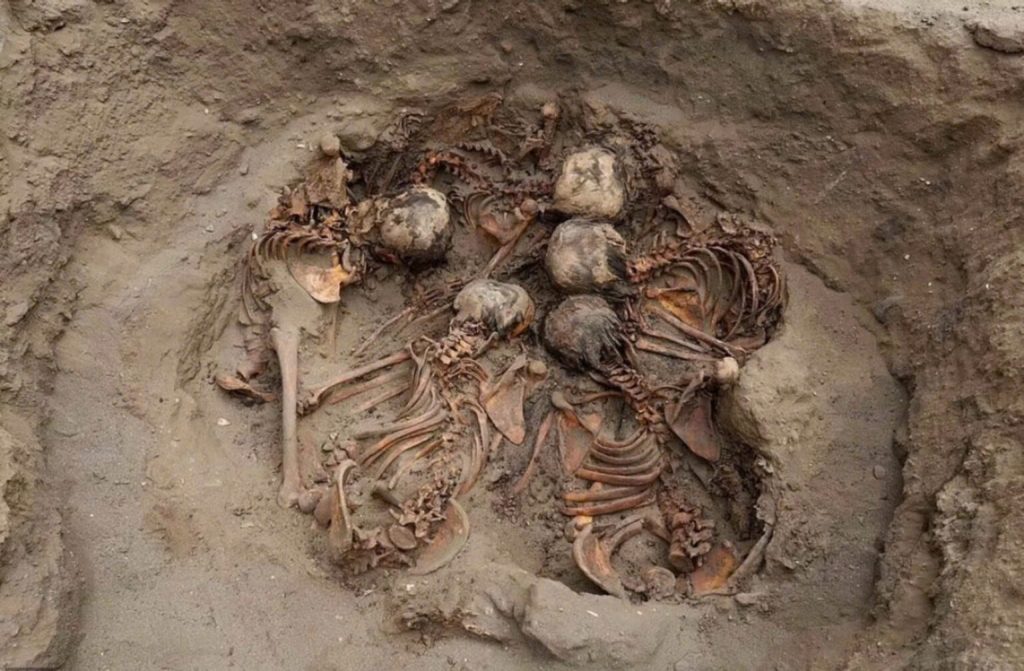
A Unique Burial: Five Girls in a Circle
Among the many unsettling graves unearthed at the Pampa La Cruz archaeological site, one stood out as particularly haunting. This grave contained the remains of five young girls arranged in a circle, their heads positioned to meet at the center. This configuration is unlike other burials discovered in the area. Typically, children in Chimu sacrificial practices were buried with their feet facing east and their heads pointing west, a consistent pattern tied to their religious traditions. This circular burial arrangement raises questions about the specific purpose or significance of these five individuals within the broader context of Chimu rituals.
Traces of Six Sacrificial Events
The children’s remains were found across two large mounds within the Huanchaco district’s Pampa La Cruz site. Archaeologists believe these sacrifices occurred during six distinct events spanning from approximately 1050 to 1500 AD. These events, occurring across nearly five centuries, suggest that child sacrifice was not an isolated or occasional practice but rather an ingrained aspect of the Chimu civilization’s spiritual and cultural identity.
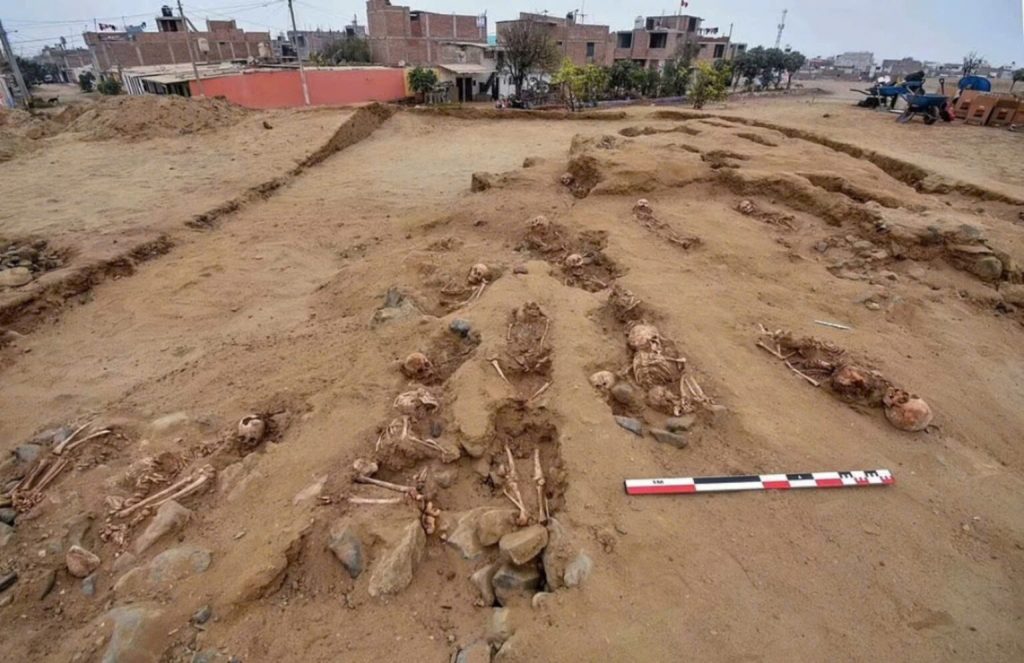
The Chimu Civilization: A Legacy of Innovation and Rituals
The Chimu civilization, which arose around 900 AD after the decline of the Moche culture, developed into the largest pre-Columbian empire in Peru before being conquered by the Inca. Renowned for their advanced agricultural systems, particularly their mastery of irrigation techniques, the Chimu left a lasting imprint on the cultural and economic landscapes of Peru’s coastal regions. However, alongside their technological and artistic achievements, the Chimu’s practices included darker aspects, such as their ritualistic human sacrifices, which have continued to intrigue and disturb modern scholars.
Sacrifice as a Spiritual Offering
Although the precise motivations behind these child sacrifices remain uncertain, many researchers hypothesize that these acts were offerings intended to appease or communicate with Chimu deities. Human sacrifice, particularly of children, appears to have held a central place in their religious observances, possibly as a way to secure divine favor during periods of crisis or to ensure agricultural fertility. The meticulous burial arrangements and the sheer scale of these sacrifices underscore their importance within the Chimu’s spiritual framework.
Methods and Motivations: Unraveling the Mystery
Archaeologists and researchers are tirelessly working to uncover more details about the methods employed in these sacrificial rituals. Evidence suggests that many of the children’s lives were taken in particularly brutal ways, with some victims showing signs of their hearts being removed. This aligns with similar discoveries at other Chimu sites, where the removal of the heart was a recurring feature of sacrificial practices. Such acts likely carried deep symbolic meaning, possibly linked to the idea of offering the essence of life to the gods.
In addition to examining the physical remains, researchers are analyzing artifacts, soil samples, and other contextual evidence to piece together the broader cultural and environmental factors that may have driven the Chimu to perform such rituals. These studies aim to reveal whether specific events, such as natural disasters, famines, or conflicts, prompted the sacrifices or if they were part of a regular religious calendar.
The Largest Child Sacrifice Site
This latest discovery adds to the already grim record of child sacrifice associated with the Chimu civilization. In 2019, archaeologists uncovered the remains of over 140 children aged 5 to 14 at another site in the region, marking it as the largest known child sacrifice in history. Many of these children bore evidence of violent deaths, including the removal of their hearts. The sheer scale and brutality of these sacrifices highlight the profound role such rituals played in Chimu society.
The Chimu’s Legacy: A Dual Image of Progress and Sacrifice
Despite their eventual conquest by the Inca and later by Spanish colonizers, the Chimu civilization’s influence endures. Their innovations in agriculture, metalwork, and architecture continue to inspire awe among historians and archaeologists. Yet, their practice of child sacrifice casts a shadow over their legacy, serving as a reminder of the complexities and contradictions inherent in ancient cultures.
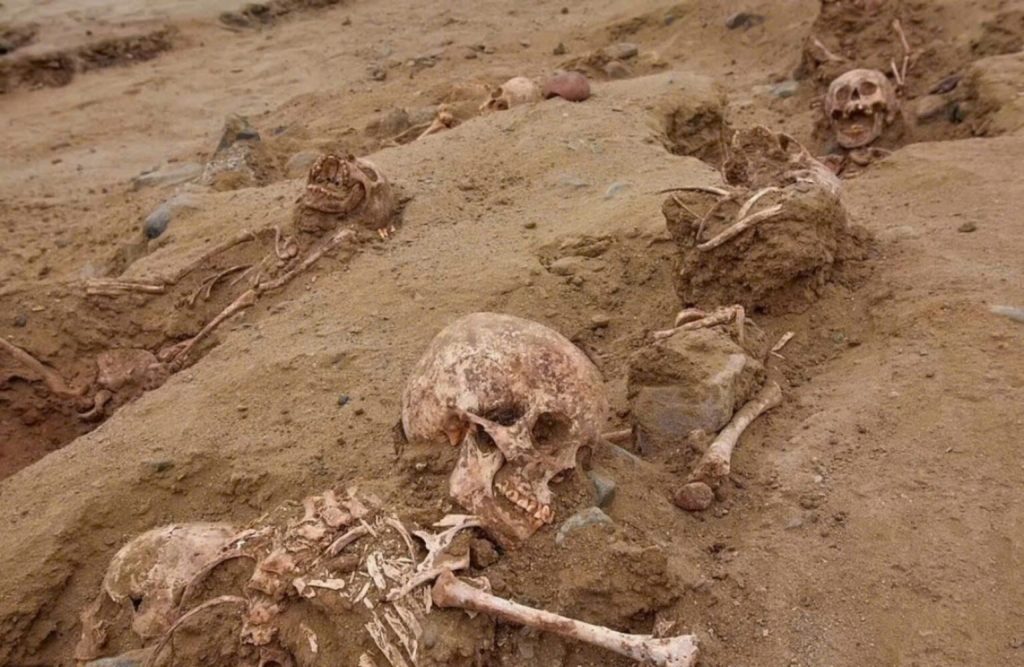
The Chimu’s dual legacy invites reflection on the nature of human societies, where extraordinary advancements can coexist with practices that modern perspectives find abhorrent. This juxtaposition is particularly poignant in the context of child sacrifice, where the innocence of the victims contrasts starkly with the cultural and religious imperatives that dictated their fates.
Insights from Ongoing Research
As archaeologists delve deeper into the Pampa La Cruz site and similar locations, their discoveries contribute to a more nuanced understanding of Chimu society. Every artifact, burial site, and skeletal remain adds pieces to the puzzle, revealing not only the rituals of the past but also the social and environmental conditions that shaped them. This ongoing research aims to answer pressing questions about the Chimu’s motivations, methods, and the broader implications of their sacrificial practices.
Reflecting on the Past: Lessons and Legacies
The discovery of these 76 child skeletons, along with the broader history of Chimu sacrifice, serves as a sobering reminder of the complexities of ancient civilizations. It challenges modern sensibilities, compelling us to grapple with the ways in which human cultures have sought to understand and influence the forces of nature and the divine.
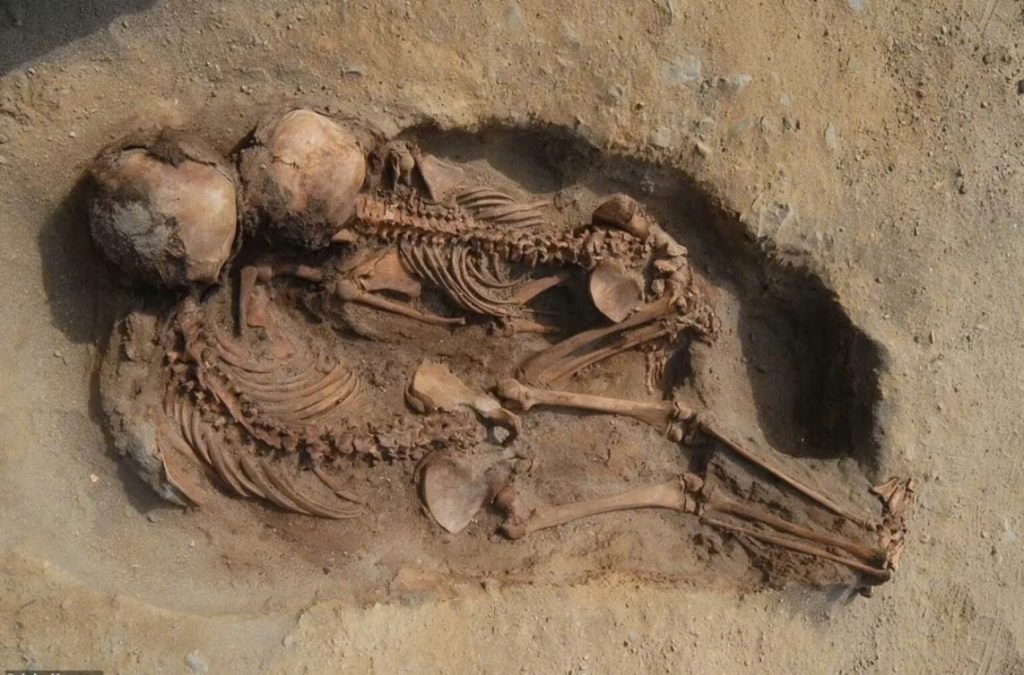
As researchers uncover more about the Chimu’s sacrificial rituals, they also illuminate broader themes that resonate across human history: the tension between innovation and tradition, the relationship between power and belief, and the enduring human quest to make sense of an often unpredictable world. These themes, while rooted in the distant past, continue to hold relevance in contemporary discussions about culture, morality, and the ways in which societies define themselves.
Conclusion: A Window into Ancient Life and Death
The excavation of these sacrificial sites provides a window into the lives and beliefs of the Chimu civilization, offering invaluable insights into their spiritual practices and societal structures. While the acts themselves evoke horror, they also underscore the depth of the Chimu’s religious devotion and the lengths to which they were willing to go to uphold their cultural values.
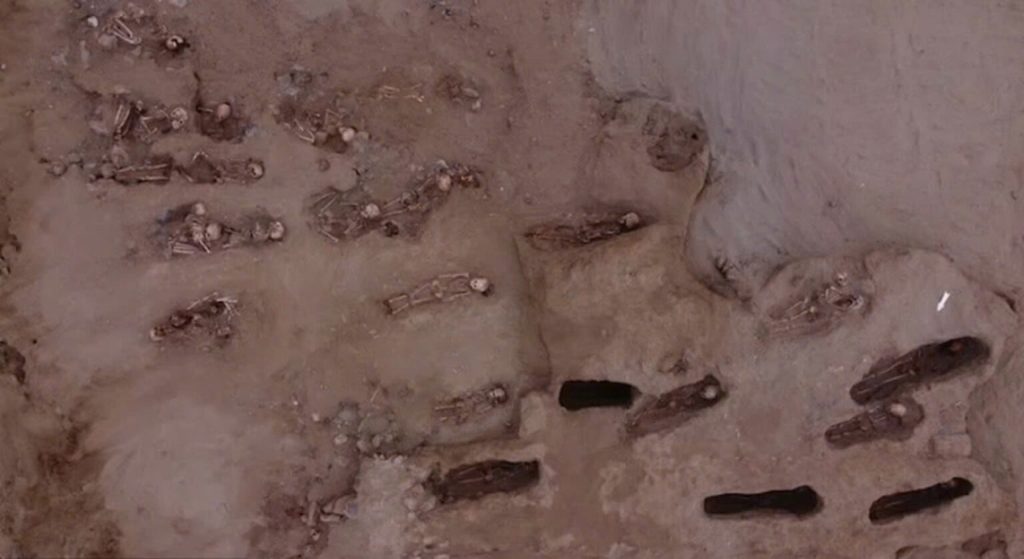
This discovery, like others before it, highlights the importance of archaeology in uncovering the layers of human history. By studying these ancient practices, we not only learn about the Chimu but also gain a deeper appreciation for the diverse and often complex ways in which human beings have sought to navigate their existence on this planet. The remains of these 76 children stand as both a testament to the past and a call to reflect on the legacies we choose to leave behind.





